The background to A Betrayal of Heroes centres on the story of the Spanish Republican fighters who, despite Franco’s victory in their civil war, carried on the battle against fascism and the Nazis. But that story begins with one of the greatest yet least-known episodes of the Second World War.
Let’s go back to the Allied defeat in the 1940 Battle of France. The Germans have occupied northern and western France. The rest of France itself, along with all the French colonies, become the so-called “Free Zone” with its capital at Vichy – Vichy France. Meanwhile, one of the only French generals who’d been successful against the Germans, Charles de Gaulle, had escaped to London and established a base at Carlton Gardens – a base for “Free France”. He was joined there by other loyalists and French troops who’d escaped from Dunkirk. But that was all they had – that small corner of London.
Then, a minor miracle. Félix Éboué, born in French Guiana, and now Governor of French Equatorial Africa, declared for de Gaulle and Free France. Suddenly, Free France has a new capital – at Brazzaville – plus territory now larger than mainland France, and a significant army. Troops from Gabon, Chad, Cameroun and French Equatorial Africa.
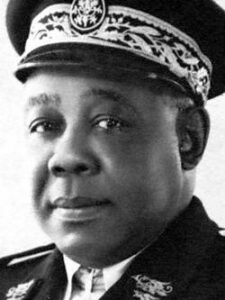
In addition, soldiers from the French Foreign Legion – including former Spanish Republican fighters – who’ve come over to de Gaulle. An army under the command of Colonel Philippe Leclerc.
Leclerc and de Gaulle know that they need a victory – to make the point that Free France would be a force with which to be reckoned.
Leclerc had a plan. Beyond the northern part of Chad borders Libya. And in Libya, 250 miles across the southern Sahara Desert, stood the Italian Al-Taj fortress at the Kufra Oasis. 250 miles of some of the worst terrain in the world.
Leclerc’s force was a motley bunch. A mixed bunch of African and European troops, sixty troops, a couple of scout cars, two 75 mm mountain guns and a batch of camels to lay his supply lines.
Kufra and the Al-Taj fortress were protected by strong defensive lines, by machine gun companies of the Royal Italian Army, 280 Askari local infantry, armoured cars of the Auto-Saharan Company, and support from the Italian airforce.
Leclerc’s force had to face that 250-mile journey across the desert, and arrived near Kufra with only 350 men and just a single artillery piece. It was a remarkable achievement, something to rival the exploits of Lawrence of Arabia.
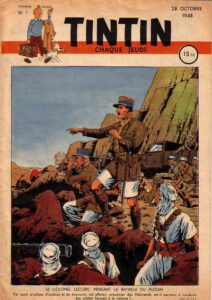
On 17th February 1941 his units faced their first clash with the Italians and drove them off. A couple of days later, Leclerc then laid siege to Kufra and the fortress. The 75 mm gun kept up a remorseless shelling of the walls and there were further clashes between the Free French and Italian troops.
Almost against the odds, after ten days of siege, the Italians surrendered. The garrison was permitted to withdraw and the French too possession of eight armoured car, a bunch of trucks, four 20 mm cannons and 53 machine guns.
It was Saturday 1st March and, on the following day, Leclerc occupied the fortress, raised the Free French flag and gathered his troops together. It was Leclerc’s “Alamo” moment, the creation of a legend. He made his troops swear an oath – the Oath of Kufra.
Jurez de ne déposer les armes que lorsque nos couleurs, nos belles couleurs, flotteront sur la cathédrale de Strasbourg.
“Swear not to lay down your arms until our colours, our beautiful colours, float again above the cathedral at Strasbourg Cathedral.”
It was a wild ambition. An Allied victory still seemed like a pipe dream. And there was not yet even the whisper of a plan to drive the Germans out of France again. Two thousand miles from Libya to northern France. Paris to be liberated. 600 miles across northern France to Strasbourg. Impossible!
And yet, on 23rd November 1944, Leclerc led units of a very different Free French army – Leclerc’s 2nd Armoured Division – into Strasbourg, and one of his Moroccan soldiers climbed the vertiginous tower of the city’s cathedral to fly the French colours. Leclerc’s Division, of course, included that entire unit of former Spanish Republican soldiers known as La Nueve.
The Oath of Kufra was fulfilled.
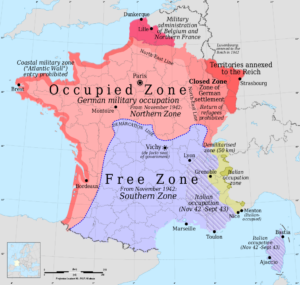
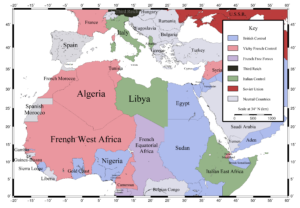
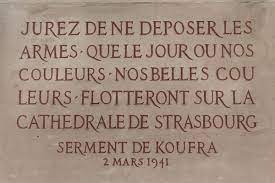
Leave a Reply